Peru Travel Guide Part II – From the Titicaca Lake to Cusco
The Second Part of my Peru Travel Guide is about our time in the Andes: From the Titicaca Lake at the Bolivian border to the famous Machu Picchu!
Make sure you don’t miss my Peru Travel Guide Part I about our our trip to the Amazon jungle, the road trip along the west coast, all the way South to the oasis Huacachina and the colonial city Arequipa.
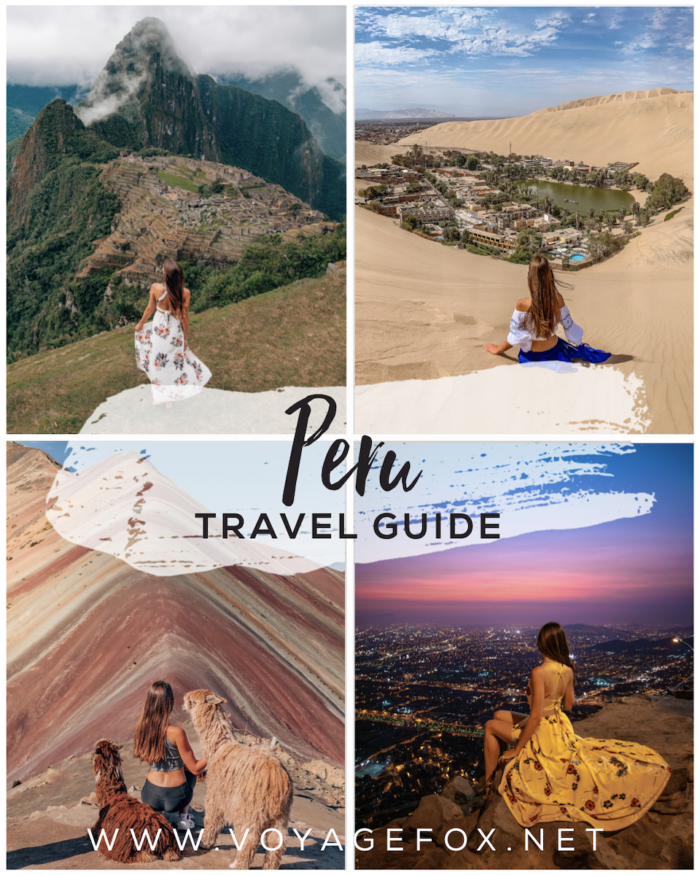
FROM THE TITICACA LAKE THROUGH THE ANDES

Map of Peru with all stops during the second part of our road trip.
THE COLCA CANYON (1)
We drove up the mountains for several hundred meters on our way from Arequipa to the Colca Canyon. On the way we saw countless Alpacas jumping around.
After reaching the National Park we had to pay 70 Soles (approx. 19 Euro) per person to continue our driving. This high price is only for tourists and was increased at the beginning of 2019. But there was no way for us to skip this place since we really wanted to see it.

Countless fluffy alpacas
The Colca Canyon is known for the high chance to see Andean Condors with a range of 3 meters. The best time to see them is between 8.30 and 9.45 am. Accordingly this is also the time when most of the tourist busses arrive. Unfortunately we only arrived around 10 am but we still spotted two condors – which was quite impressive. The good thing about it was, that we had the crazy view all to ourselves because all the busses already left.

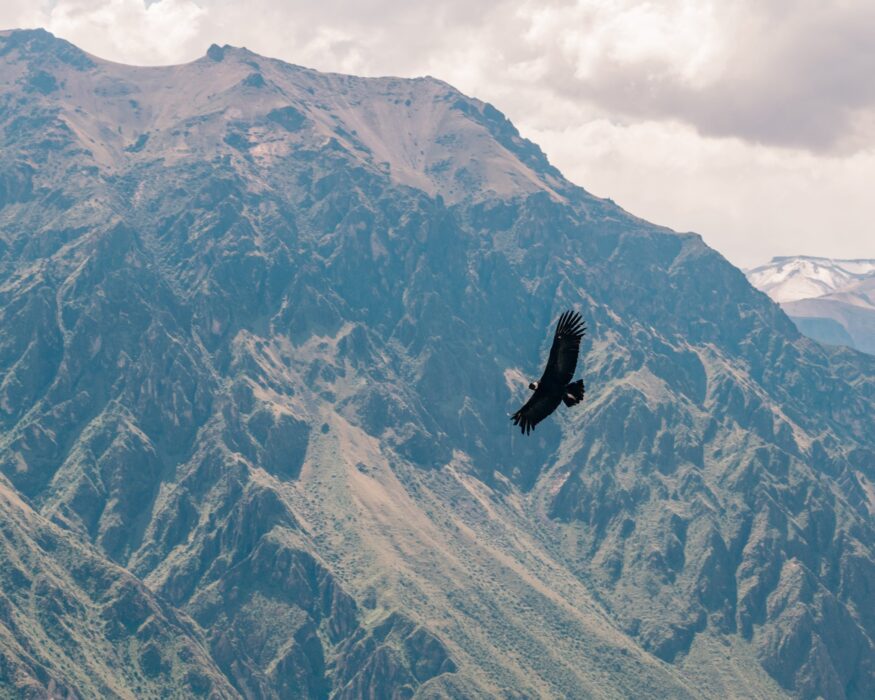
The scenery was simply incredible – it reminded me of a mix of Hawaii and a mountain scenery in Germany. There are several trails you can hike – from 30 mins till several days tracks.
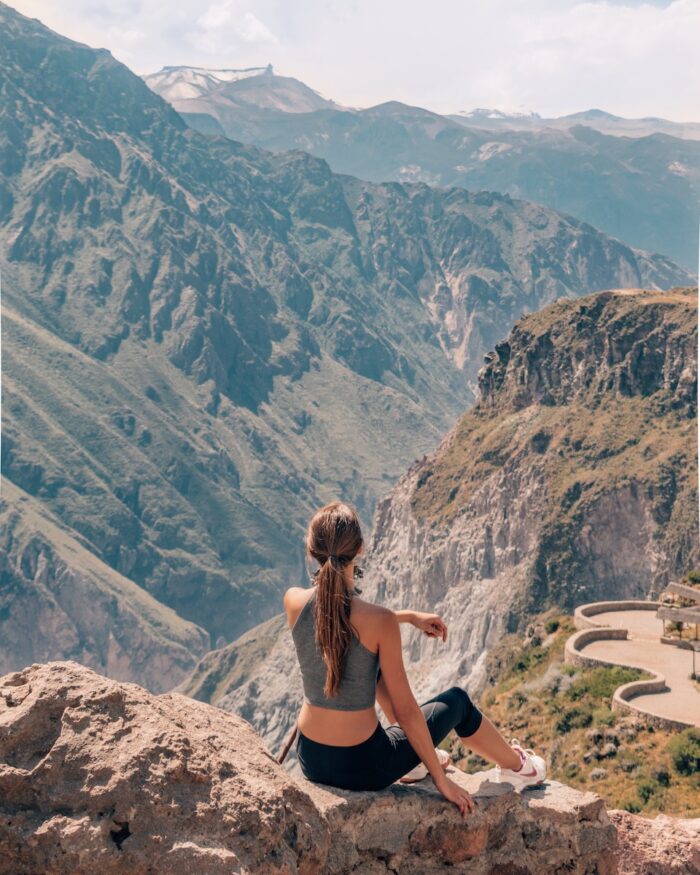
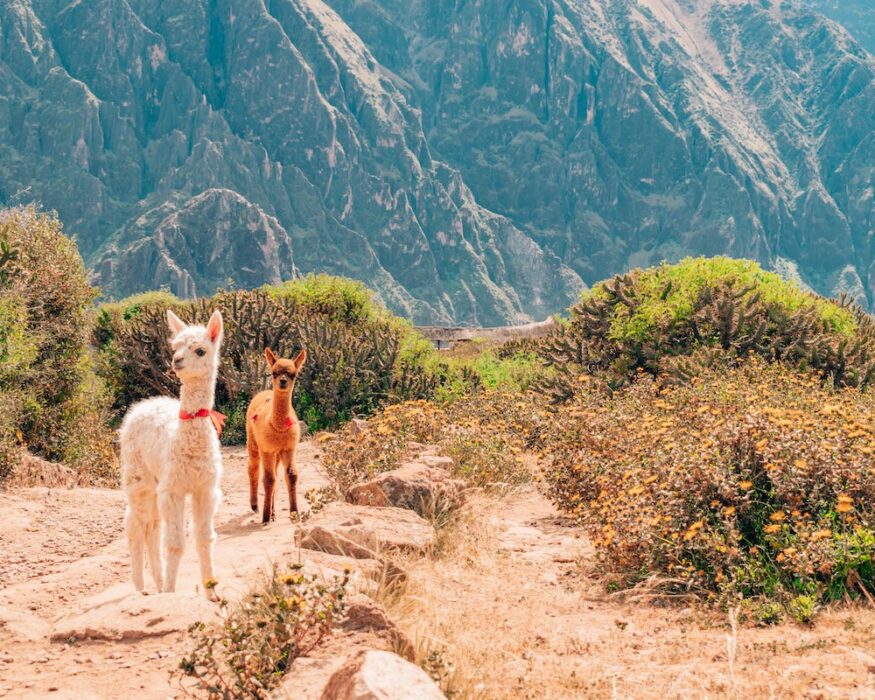
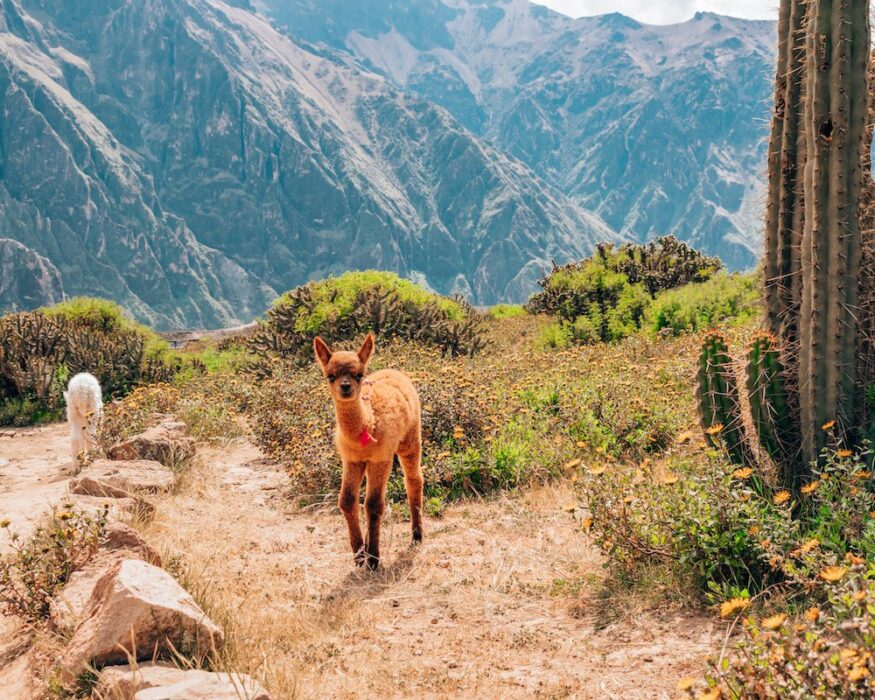
On the way through the canyon you can also spot the best preserved Inca Terraces in Peru which were built for agriculture. Some farmers still use them even nowadays.
For the rest of the day we drove through the Andes on our way to the highest lake in the world…
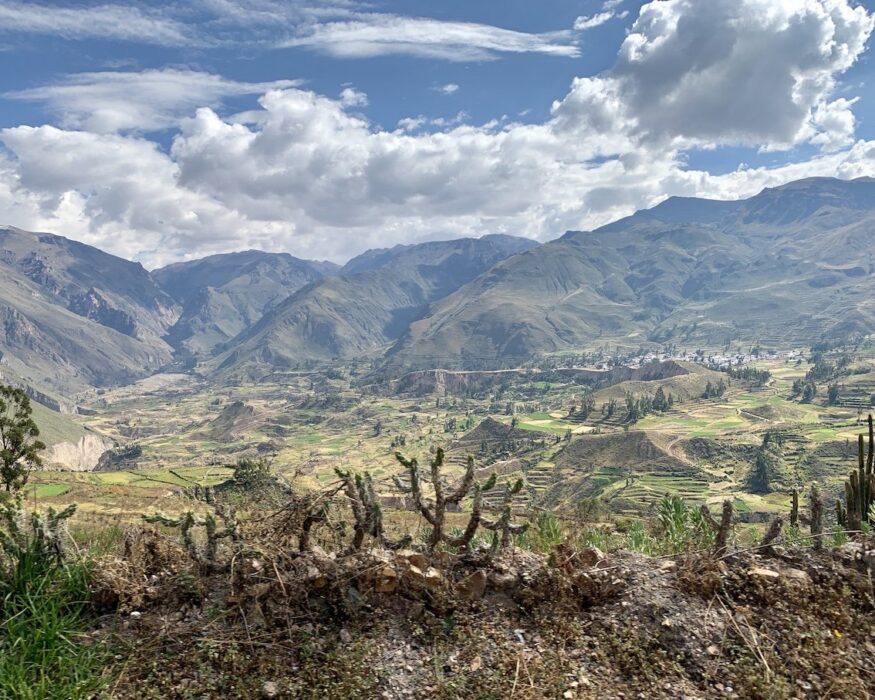
THE TITICACA LAKE (2)
We arrive in Puno in the early evening – it’s the largest city located at the Titicaca Lake.
But we planned to stay at a very special place – the Uros Islands.
These are manmade islands which are built completely out of reed by the Uros. The tribe of the Uros is the only one which never got repressed by the Incas since they had huge reed boats to swim on the lake whenever there was danger. Over the time they started to built swimming islands with little huts on it.

Puno & the Titicaca Lake – 3800m a.s.l.
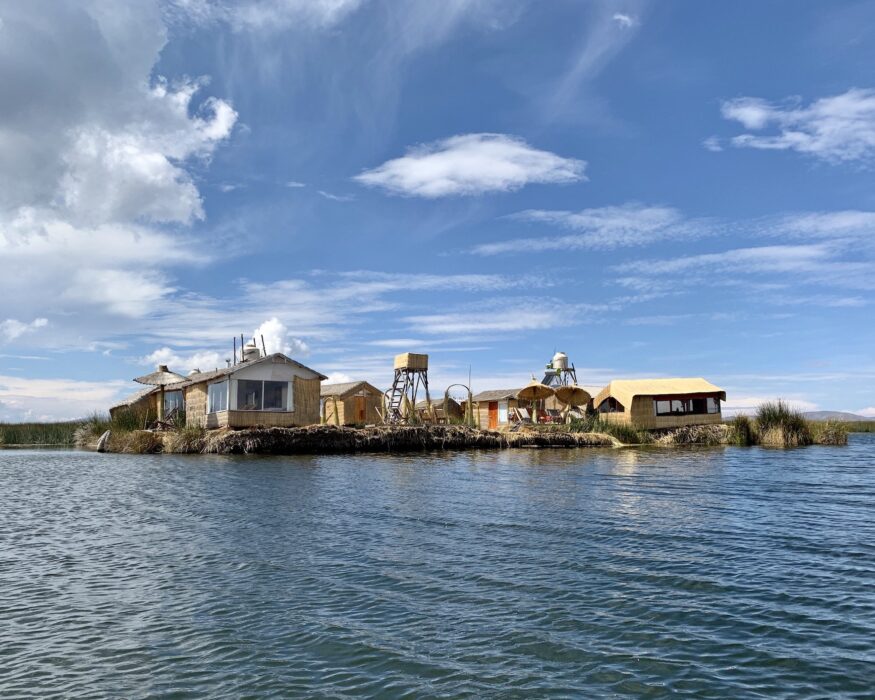
A floating island of the Uros
The islands are the main tourist attraction of the Titicaca Lake but usually visitors just see them from a boat. We decided to spend two full days on the islands to see how the people live there and it was a wonderful experience.
One island usually hosts one family with several houses on it – they are like little huts made out of wood but inside we even had a shower and a huge bed. Another hut is for the kitchen and one more has a huge table inside for eating & sitting together.
The days on the lake were super sunny and warm but in the night the weather got extremely cold and of course there was no heater in our hut. But they prepared several blankets and bottles with hot water to warm our feet which made it really cozy.
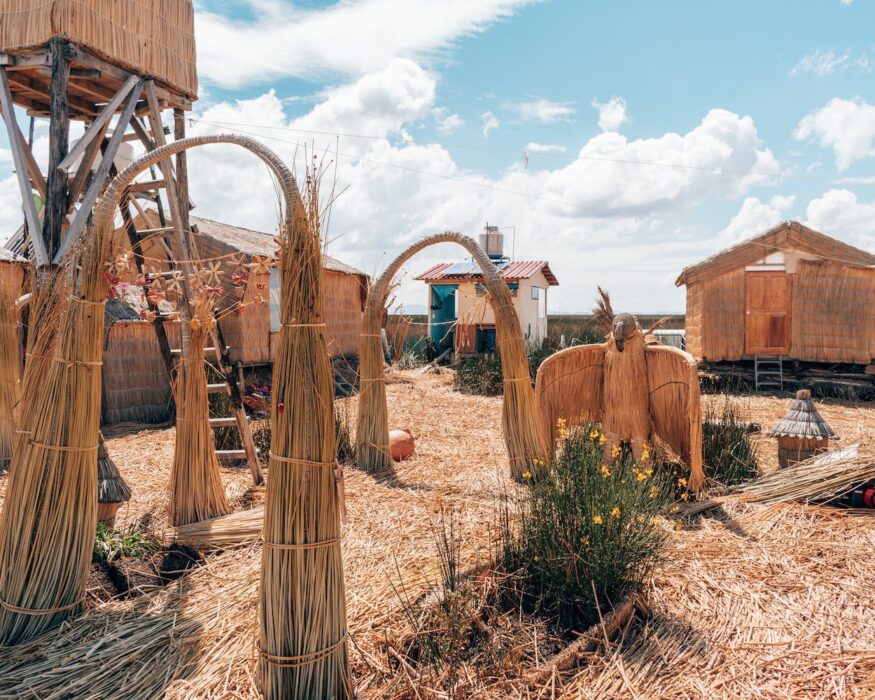
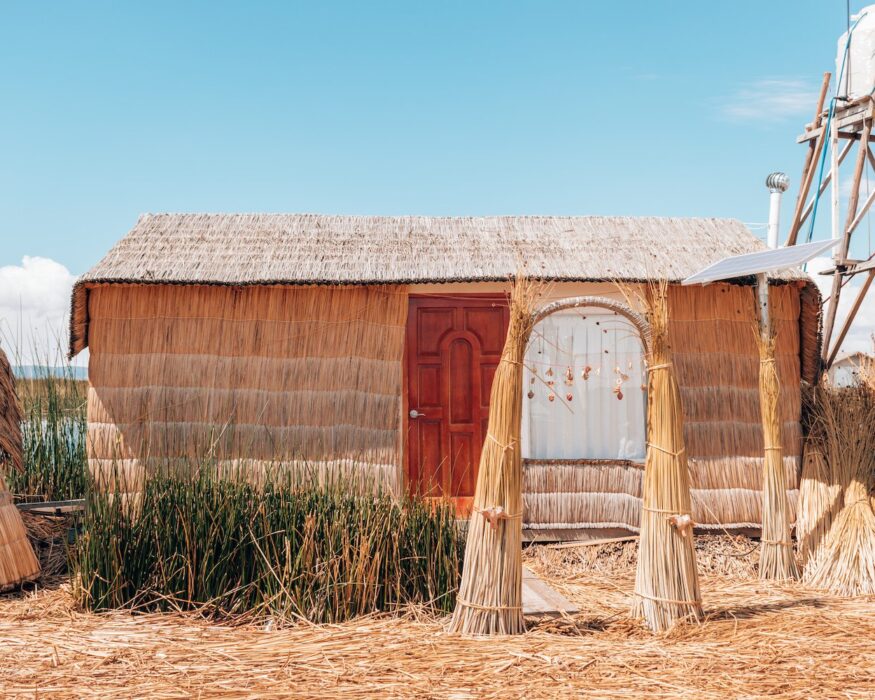

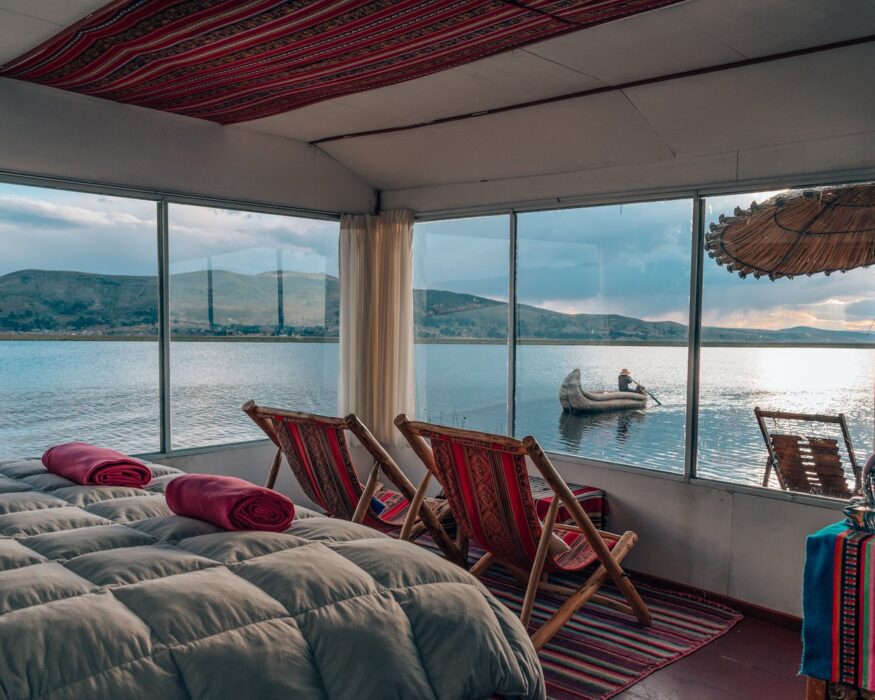
The locals put a lot of work into their homes cause every 15 days they have to add a new layer of reed on the floor to prevent the island from sinking. Which means harvesting the reed firstly by boat, cutting and collecting it, bringing it to the island and spreading it in rows on the floor.
Traditional boats are made out of reed too but nowadays the families usually have a second motorboat to reach Puno or to collect the reed.


We stayed with the Waliski Family and our host family was super friendly. They cooked for us, showed us their traditions and we even helped them to add layers of fresh reed on a second island they are building at the moment.
It’s been a really authentic experience and we felt extremely peaceful during these two day – seeing nothing but the quiet lake and the mountains of the Andes behind it is so relaxing.


ARRIVING IN CUSCO (3) … AND FACING SOME PROBLEMS
After this amazing experience we were off to the next destination. It’s the main reason to visit Peru for most tourists: Cusco & Machu Picchu.
We arrived at the Novotel Cusco in the evening and went to dinner when we suddenly got a mail from the train office. It said that there wont be any trains going to Machu Picchu for the day we actually planned it!! So we directly went to the office of Peru Rail to change the tickets to another day – but since it’s (almost) the only way to reach the famous sight all other trains were already booked out. We took the only available seats which were leaving in the evening two days before we actually planned it. Of course this also meant to book new entrance tickets and another hotel for Aguas Calientes, the city at Machu Picchu.
(Note: After our visit we were told that we could have used our tickets for another day due to the strike – but this was nowhere mentioned or noticed – so no visitors knew about it…)
THE RAINBOW MOUNTAIN TREK (4)
But before visiting the famous Inca city we planned a trip to the Rainbow Mountain a day earlier. This was the only time we booked a tour with a company since it’s tricky to find the way & to do the hike on your own.
We booked it with ‚Flashpackers connect‘ and they picked us up already at 2.30 am in the middle of the night! This is necessary to arrive for sunrise. The drive to the starting point is almost 3,5 hours which gave us enough time to catch up on some sleep in the bus.
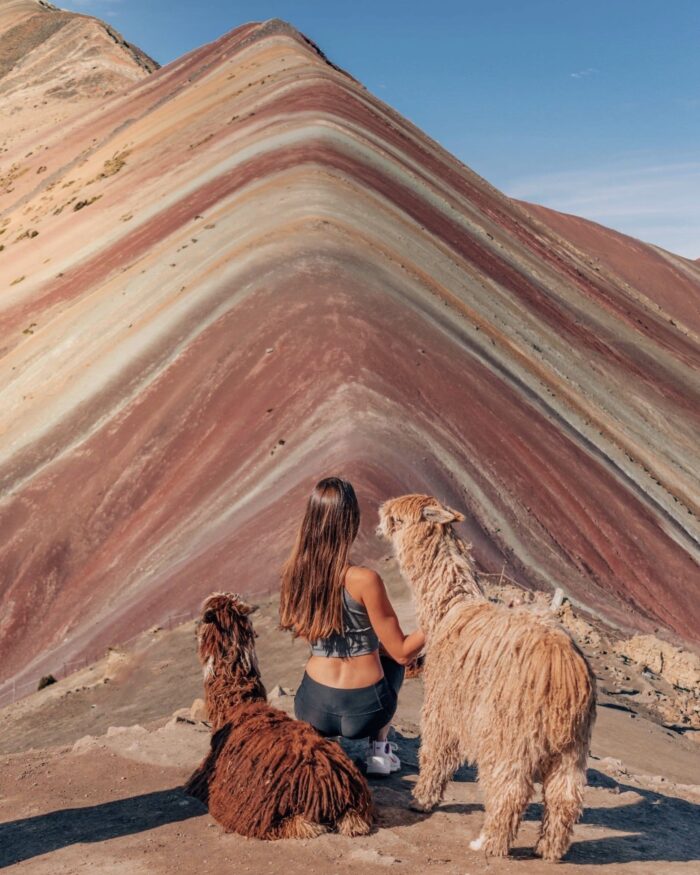
Cusco is already located in a height of 3500 m but we drove up to 4700 m to start the trek above the clouds.
The weather was clear and after arriving at around 6.15 am, and having a quick breakfast in the car, we started our way up to the famous mountain.
Due to the extreme height you can get dizzy quite fast and we needed to do several breaks during the walk up. Luckily our advanced guides helped us a lot by showing us the right breathing techniques & not pushing us to walk faster.
The way up is already breathtaking (Not just cause of the thin air 
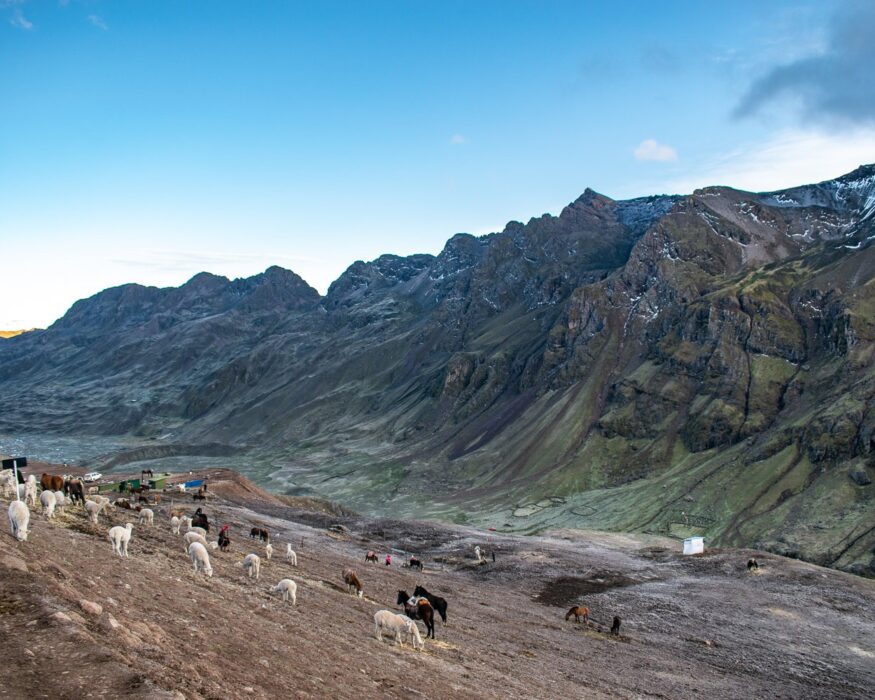

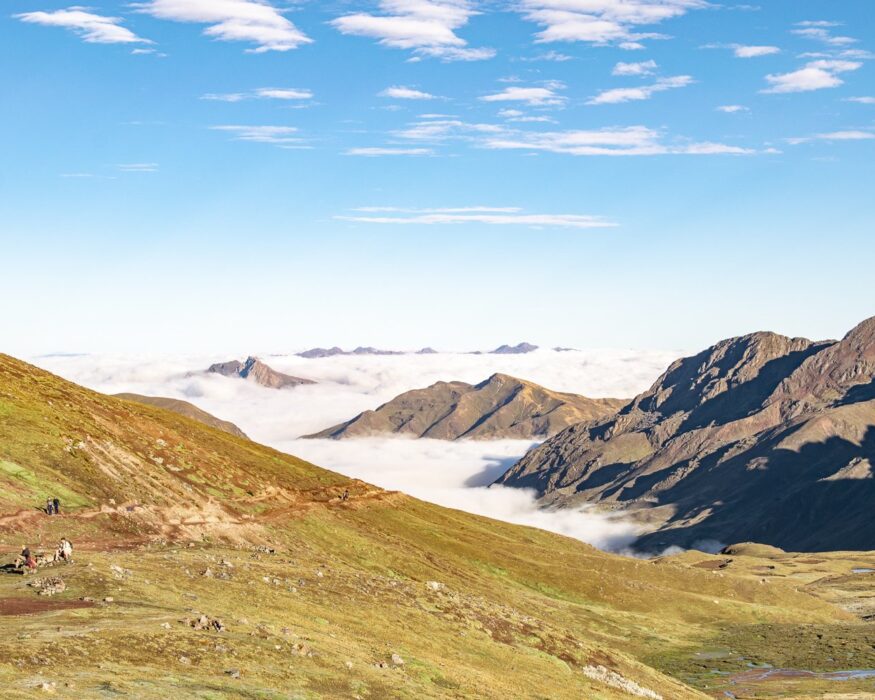
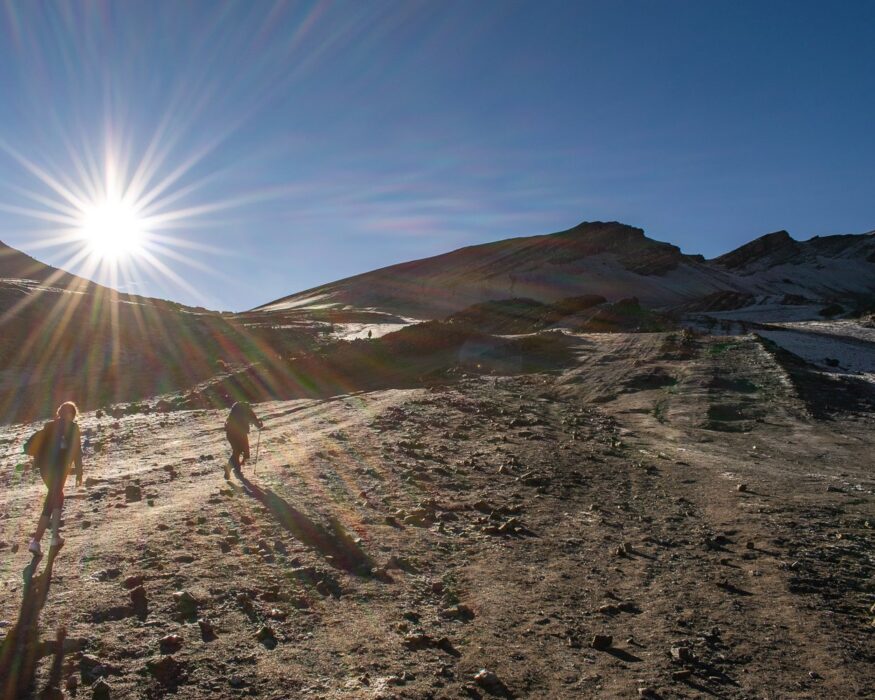
After 2,5 hrs and reaching 5400 m above sea level we finally arrived to the famous Rainbow Mountain. Different layers of minerals have given the mountain the natural bright color. The sight of the mountain was still amazing with only a few other tourists since we started so early!
The longer we stayed, the more people reached the top and some groups were still on their way. The walkway which was empty during our way up was now packed with hikers. In this moment we were just really happy for our early pick up – otherwise we wouldn’t have had the opportunity to witness the peaceful beauty of the mountains.


MACHU PICCHU (5)
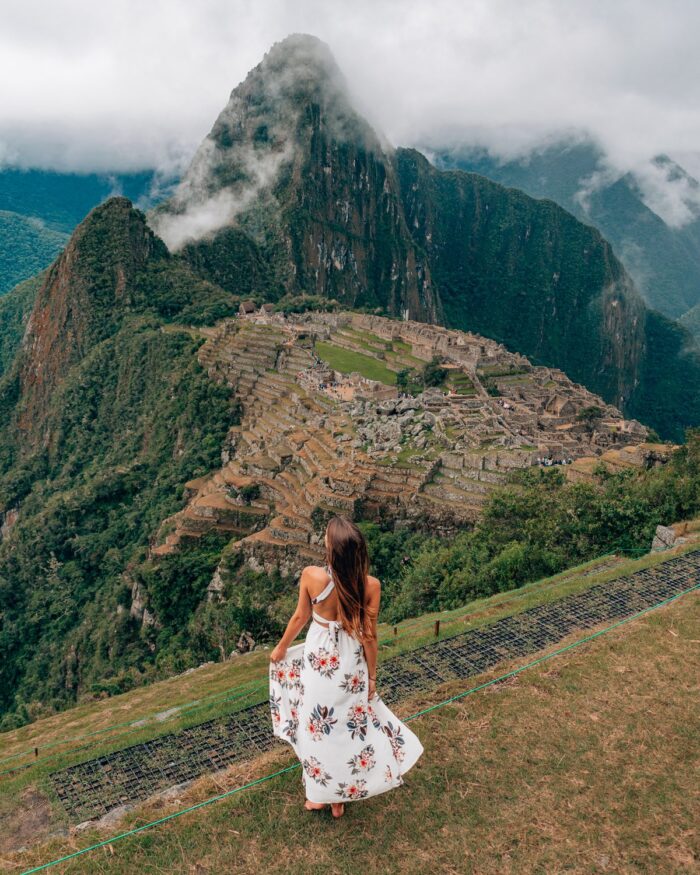
The train ride to aguas calientes
On our way back we directly drove to the train station of Inca Rails. There are only two companies which offer a train ride to Aguas Calientes: Inca Rails & Peru Rails. Both offer different price & comfort categories of their trains but the railway is always the same. It’s definitely the most picturesque train ride I ever did and you feel like an explorer driving along the river through the mountains and getting deeper and deeper in the jungle.
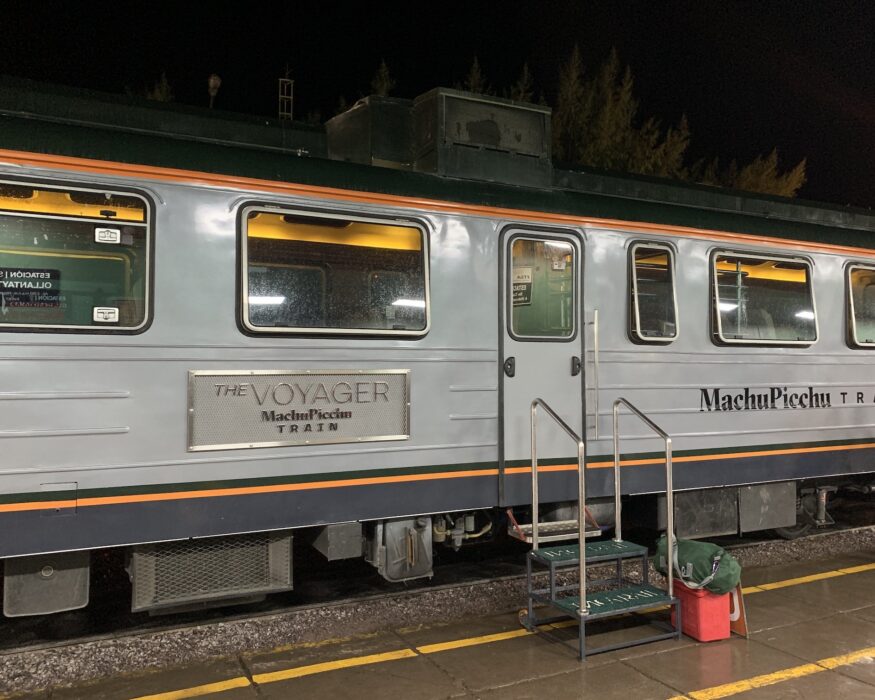
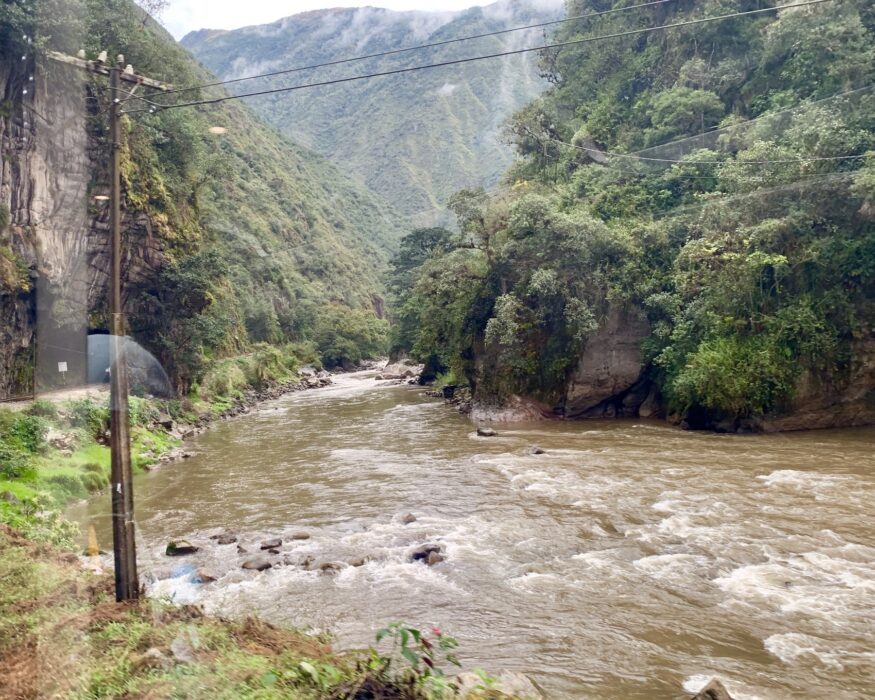
REACHING MACHU PICCHU FROM AGUAS CALIENTES
When we arrived in Aguas Calientes it was already quite late so we directly went to our hotel and go to bed to get enough sleep for the next day.
All Tickets for Machu Picchu are sold for a specific hour to enter the area – lately they invented a time limitation for visitor of three hours to visit the main attractions. You can check the availability for tickets on a specific date at this official website.
We booked a ticket for 7 am but to reach Machu Picchu you either have to walk up a mountain for around 2,5 hours or take a bus which approx. takes 25 mins.
It’s REALLY IMPORTANT to get your tickets in the bus office one day before ! (Unfortunately this wasn’t possible for us since the office was already closed when we arrived in the late evening)
There is a long queue for the buses – but they depart every 2 mins so that’s not a problem. BUT the queue to get a bus ticket takes forever early in the morning – we waited 45 mins to get them! Be sure to bring enough cash since they don’t accept credit cards.

The Bus Station in Aguas Calientes
Of course it was pouring rain when we arrived to Machu Picchu. Which means it was almost completely covered in clouds. In the afternoon the weather got better and the sky cleared off to show us the incredible beauty of Machu Picchu!

Machu Picchu in the morning…
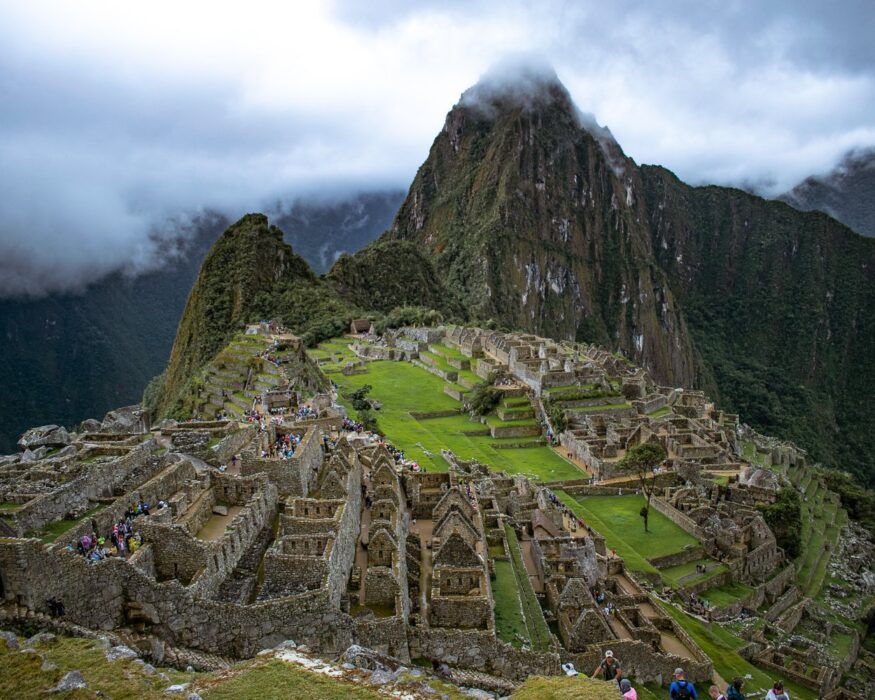
& in the afternoon: Huayna Picchu is visible !
WHAT TO DO IN MACHU PICCHU
Due to the rain and the tons of people in the morning we decided to do the hike to the temple of the sun first. The hike was quiet exhausting and slippery due to the rain but we had some amazing views on the way up. The temple itself is not really spectacular so you have to decide yourself if it’s worth the 1,5 – 2 h hike for you.
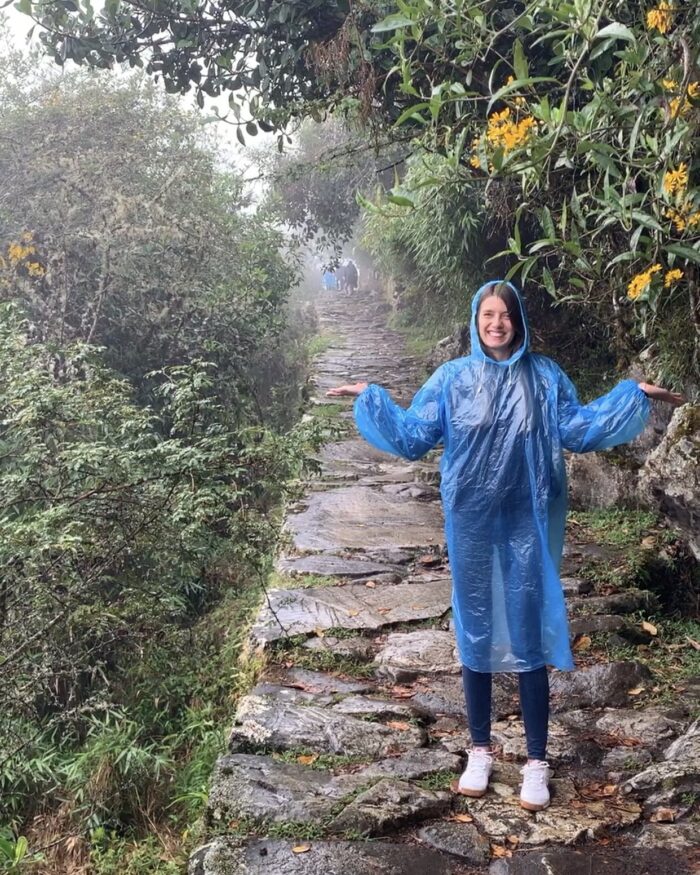
On the way up to the temple of the sun it was pouring rain !
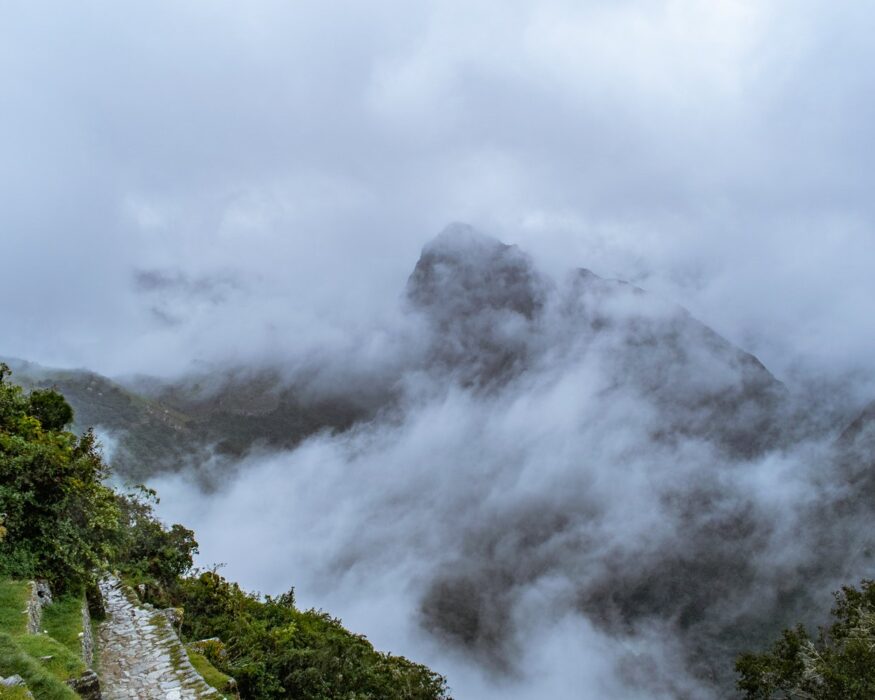
Clouds hiding the view from the top…
The Inca Bridge is a MUST do! It used to be the connection way between Machu Picchu and the next city. The trail is right at the cliff which makes it quite dangerous. The idea of Incas was to block the way by removing some planks if they didn’t want someone to enter – this particular spot is called the Inca Bridge. Today you can walk to the bridge on the original way and the views will take your breath away. First you see the village with the surrounding mountains and later you overlook the deep valley with the wild river running through it.


WHAT YOU SHOULD KEEP IN MIND:
- I would highly recommend to visit the village as a last resort before you plan to leave Machu Picchu since its a one way path through the ruins which leads directly outside of the area. Once you left the areal there is no way for you to go back inside. Not all visitors know about it and will maybe miss other spots they planned to see after the village…
- It is possible to hike up one of the mountains around Machu Picchu – but the access is strictly limited. You can buy it online together with your entry ticket. But keep in mind that the hike is extremely steep and can be very dangerous during rainy weather.
- Bring your own water & snacks to Machu Picchu but remember to take back everything you brought with you! There are no shops, restaurants, toilets or trashcans in the areal – you can only find them at the entry gate.
- It’s not necessary to visit Machu Picchu in the early morning. The weather is rainy most of the times in the morning and usually sunny in the afternoon. There were soo many people when we arrived in the morning but it got a little better in the afternoon. It’s enough to take a train from Cusco in the morning, go directly to Machu Picchu around 12am, stay during the afternoon and to take the last train back to Cusco the same day.


THE MYSTERY OF MACHU PICCHU
It’s still a secret WHY the Incas decided to build this village at this remote place in the middle of the jungle – but it’s known that the mountains, sun and the water have been incredible sacred for them and this place connects all of these elements.
The Spanisch invalids never found Machu Picchu but anyway the inhabitants had to leave the village all of a sudden for an unknown reason – this is one of the secrets of Machu Picchu.
Mr. Hiram Bingham discovered the place in 1908 after it has been covered by the jungle for over 500 years. You feel the magical energy of this mysterious place during your visit – it’s a moment I will never forget!
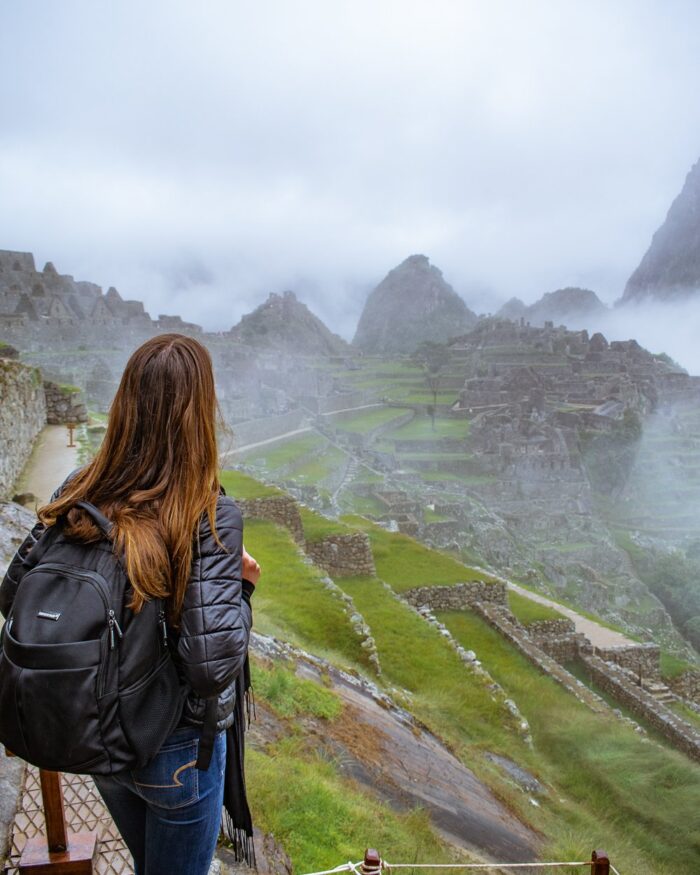
THE SACRED VALLEY OF THE INCAS (6)
SALINAS DE MARAS
After sleeping a little longer on our last day in Cusco we decided to visit the Sacred Valley of the Incas during midday.
Our first stop have been the Salinas de Maras. These are impressive salt mines in the middle of the Andes landscapes which have already been used be the Incas. Over the years they built more salt basins but the technique they use is still the same.
They lead mineral rich water from the mountains in shallow basins. The sun dries out the basins and only the salt will be left.
The brown-yellow-orange color of the Salinas makes a lovely contrast with the surrounding mountains and thanks to it’s stairs-like structure you can overlook the whole area.


MORAY
Later we visit the magical fields of Moray. They are perfectly circled and have a stairs-like structure.
It’s believed that the Incas probably used this place for agricultural researches: Every floor of the field has its own microclimate which effects the growth of different plants like potatoes, corn and other.
But for whatever they used this place it’s absolutely impressive to see the green circles from above.


CUSCO (3)
Cusco itself is a lovely city with an amazing market square (Plaza de Armas) in the middle of it. The cathedral, the museums and the many markets are so lovely to visit – even so it’s probably the most touristic city you will see in Peru.
If you’re looking for a nice place for dinner I can highly recommend the Restaurant Hanz which is right at the Plaza de Armas. We never had such a wonderful dinner for such a fair price in Peru !
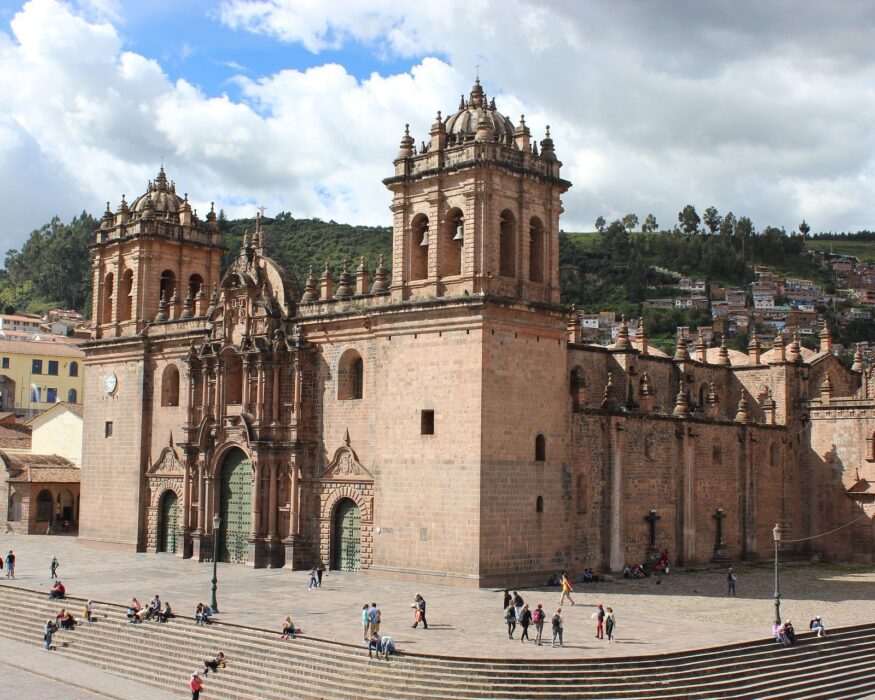
And that’s how almost three weeks in Peru came to an end. On our way back from Cusco to Lima we did a stop in Paracas again (where we also stopped at the beginning of our Road trip) to enjoy some relaxing time before heading back to Germany.
Don’t miss Part I of my Peru Travel Guide about the beginning of our journey from Lima to Arequipa along the West Coast.





